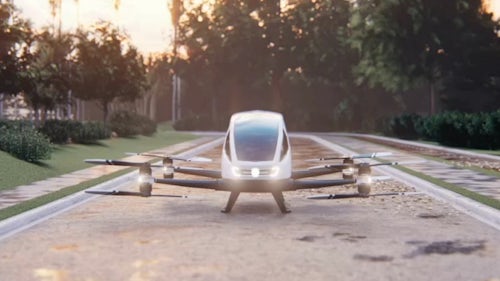電動垂直離着陸機のE/Eシステム開発
電動垂直離着陸機 (eVTOL) 製造の機運は高まっているものの、E/Eシステム開発には対応すべき課題が多く残されています。このホワイトペーパーは以下の内容を説明します。
- eVTOL市場の主要動向
- eVTOL市場の動向が航空機メーカーに与える影響
- eVTOLシステム設計の複雑さを構成するもの
- 成功する電気/電子 (E/E) システム開発プラットフォームの特性
- シーメンスのCapital E/Eシステム開発ソリューションがイノベーションを可能にし、コスト効率よく短期間でeVTOLソリューションを市場投入できる理由
eVTOL開発の課題に対処するためのソリューションを詳しく紹介します。
eVTOL市場の動向と、それらがeVTOLのスタートアップに与える影響
eVTOLのスタートアップにとって重要な市場の動向とは何でしょうか。現在、100社を超える電動アーバン・エア・モビリティ (UAM) 開発企業が激しい競争を繰り広げていますが、最初に生産にこぎつけた数社のみが勝ち組です。さらに、eVTOLのスタートアップはペースの速い環境にいるため、複雑化するシステムの管理が難しく、開発や試験の繰り返しが発生してしまいます。eVTOLのスタートアップはまた、製造作業を外部に委託することが多いでしょう。したがって、サプライヤーとのパートナーシップや実用的なデジタル通信チャネルを構築したOEMは、変化に対応する工数を最小限に抑えられます。
eVTOLの複雑さと新たな課題
eVTOLの推進システムが電動であることから、eVTOLの複雑なE/Eシステム設計には新たな課題が生まれています。以下のような課題が挙げられます。
- 手動の手法では人的エラーが発生し、統合の問題が発生する
- 最高のエネルギー密度を持つバッテリーを選択することが、商業的な成功には必要
- データを手動で何度も再入力して、必要な検証、チェック、解析を行う
エア・モビリティの分野で成功するための必須要素であるE/Eシステム開発
エア・モビリティの分野に数々の障害があるなかで、成功に欠かせないE/Eシステム開発ソリューションの特性とはなんでしょうか。ソリューションのなかには、複数領域の強力な統合、デジタルツインを使用したE/Eシステムの表現、デジタル・スレッドとデジタルデータの継続性による製品ライフサイクル全体の連携が可能なものがあります。
シーメンスのXceleratorは、ソフトウェア、サービス、アプリケーション開発プラットフォームを統合したポートフォリオとして、eVTOLスタートアップのデジタル・トランスフォーメーションを加速し、強力な産業用ネットワーク効果を生み出します。
このホワイトペーパーは、シーメンスのXceleratorによって、データのサイロ化を解消し、認証とコンプライアンスのための作業を合理化することで、E/Eシステム設計が成功するわけを紹介します。
